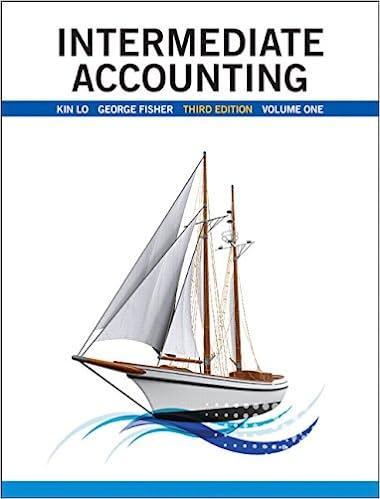Question
How to make a financial plan with the given information? A recently divorced client, Brad Martin, 40 years old, passed by you asking for financial
How to make a financial plan with the given information? A recently divorced client, Brad Martin, 40 years old, passed by you asking for financial advice. Brad has no dependents, and he is not planning to get married. Brad has been a commercial driver with the city of Calgary for the past ten years. Brad is planning to stay with his current employer until he retires; he usually works 35 hours per week.
Brad's annual income is $60,000, indexed to inflation (assume inflation of 2% p.a.). He is a member of LAPP (https://www.lapp.ca) looking at his pay stub, you realize 9% of his salary is a LAPP contribution (his employer contributes 10% to LAPP). Brad's marginal tax rate is 30.5%, and his average tax rate is 24%.
Brad rents a 1-bedroom condo for $1,500 (utilities included) near work; he doesn't have a car and relies on public transportation. Brad's monthly expenses are as follows: public transportation $300, Food $900, TV and Internet $120, wine and dining out $300, travel/vacations $400, credit card debt $300, clothing $140, and $150 on other unexpected expenses. He has a credit card balance of $12,000 with RDD Capital; the interest rate is 21.99% APR. Since Brad has a high credit score, do you believe he could apply for a personal line of credit of $15,000 at 6% p.a. Also, Brad will be paying $1000 per month in spousal support for the coming 36 months, which is not reflected on his tax return.
Brad lives frugally; he buys his clothes from Walmart; he doesn't care about his style; he wears whatever is on sale. He is not an impulsive buyer; he takes his own meals to work and makes sure to stick to his monthly budget. Brad is a wine enthusiast; he meets his friends every weekend, and they go wine tasting at local restaurants, wineries, etc.
Brad's financial position is solid; he accumulated "total current service contributions" of $350,000 over the past 20 years in his LAPP account (his average YMPE was 45,000 for the past 20 years). This balance could be transferred to LIRA or used to fund a defined benefit pension (refer to the LAPP website, https://www.lapp.ab.ca/page/full-time-pension- calculation, to calculate the same pension benefit). He also has a $15,000 emergency fund, fully invested in GICs at a rate of 1.25% p.a. (non-registered account). Brad tries to fund his retirement by contributing his tax refunds to an RRSP account, which has a balance of $60,000. His RRSP account is fully invested in risky growth stocks. Looking at his KYC risk profile you figured out that the optimal mix should be 80% equity/ 20% Fixed income till he retires. Once retired, the optimal asset allocation should be 20% equities/ 80% Fixed income.
You expect equities to yield around 7.5% p.a. on average for the coming 50 years, while fixed income annualized YTM is expected to be around 4% p.a. for the same period. Brad is expected to pay around 1.8% of investment management fees. Inflation is expected to stay at 4% p.a. for the coming decade.
Brads Goals
Brad plans to retire at age 60; he expects to receive 80% of the total CPP and OAS benefits. Brad is unsure whether he should choose the defined benefit pension from LAPP or transfer the commuted value to a LIRA account. Brad's life expectancy is 90. To be more conservative, you agreed that you'd ensure his lifestyle is fully funded until age 100. Brad estimates he will need around $60,000 pre-tax (in current dollars) per year when he's retired.
Brad dreams about buying a house as soon as possible; he doesn't have anything specific in mind; he wants to have his own place. He recently saw a house valued at $600,000, but he's unsure if it is affordable. He is planning to leave the house and all his assets to his nephew Tom (age 19). Ideally, this should happen when Brad is 90. Assume a tax rate of 40% at death and calculate probate fees.
Brad doesn't have any Wills, Powers of Attorney, Insurance Policies (except employer-sponsored health insurance), or trusts. Brad's biggest fear is cancer; since most of his family members died from cancer, he wants to make sure that his loved ones can decide to disconnect him from artificial life support if needed. He also realizes that cancer treatments are expensive and wants to ensure he does not get any out-of-pocket treatments. Brad trusts his brother and nephews to act in his best interests.
Step by Step Solution
There are 3 Steps involved in it
Step: 1
To create a financial plan for Brad Martin we need to address his current financial situation goals and concerns Here is a summary of the information provided and a proposed plan for Brad 1 Current Fi...
Get Instant Access to Expert-Tailored Solutions
See step-by-step solutions with expert insights and AI powered tools for academic success
Step: 2

Step: 3

Ace Your Homework with AI
Get the answers you need in no time with our AI-driven, step-by-step assistance
Get Started


